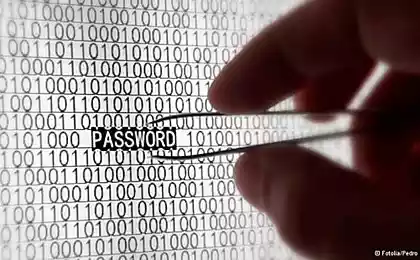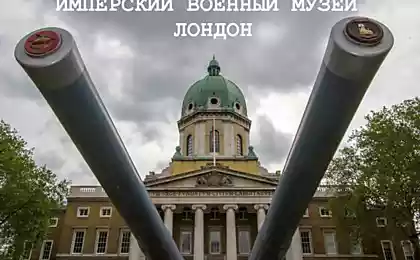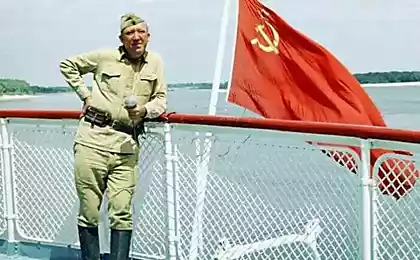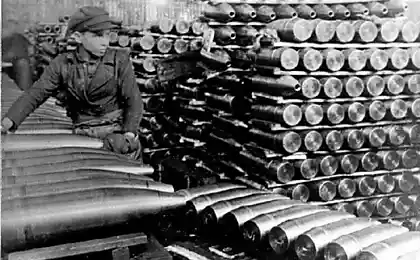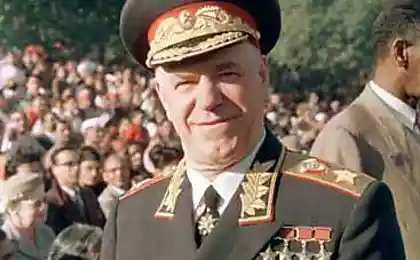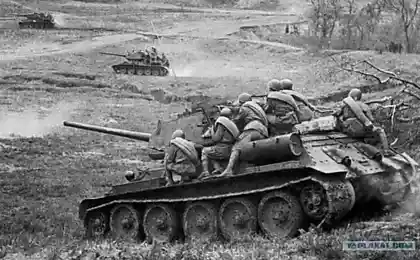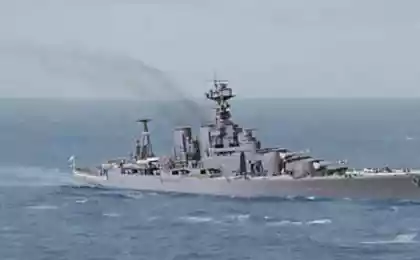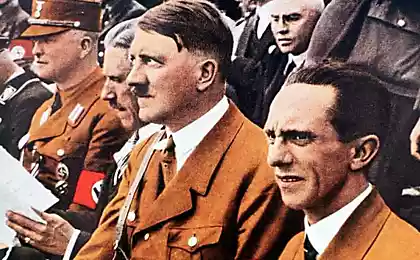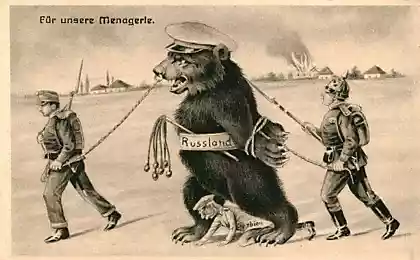816
Cipher WWII
Exploration can not reveal the code of the carrier pigeon.
5 posts:
Text-source.
Photo via spiegel.de.
1. Message from the Second World War, was found dead at the foot of a dove, stumped leading cryptographers of the Government Communications (DSP) - British intelligence units responsible for information security.
The remains of the bird together with the capsule, store the message was found in the fireplace in the county of Surrey in southern England.
Interpreter of the DSP are struggling with the cryptic message without any success for several weeks.
According to them, unless additional data to decode it will likely be impossible.
In search of the information they asked for help from the public.

2. Mysterious report found David Martin, when he began to dismantle the chimney at his home in Surrey. Among all rubbish he came across the scattered remains of a dead pigeon, including foot, to which was attached a red capsule. Inside it was a thin piece of paper with a printed heading "pigeon", under which is placed a handwritten ciphertext.
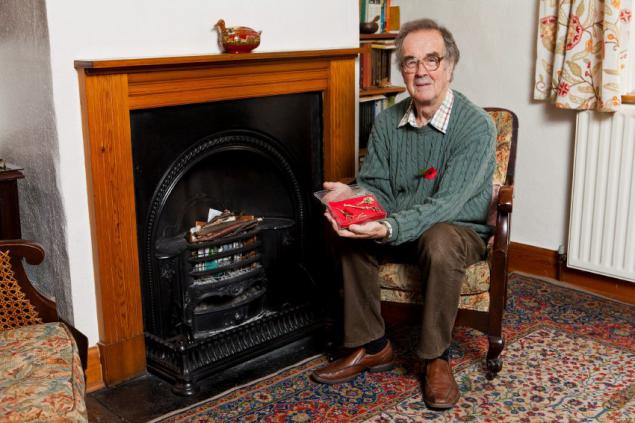
3. The message is divided into 27 groups of five letters each, arranged in four columns. Encrypting of DSP - agencies specializing in electronic intelligence and data protection - have received the note at the beginning of the month, but all their attempts were unsuccessful decode it.
"In fact, we have not entertained any special hopes on the success of the decryption, because such operations use the codes developed in order that they can be understood only the sender and receiver of the message," - explains historian DSP wish to submit only as Tony .
"If you can not get much information about who actually sent this dispatch and to whom it was intended, we can not establish how exactly the code they used," - he said the BBC BBC.
Experts believe that there are two ways by which you can decrypt a note. It could be the so-called one-time code that corresponds to each message a separate key, generated randomly. If the key is truly random and known only to the sender and recipient, the code can be absolutely unbreakable.
The alternative - if the code was based on a special (and probably later destroyed) collection code compiled for a particular operation, so that the maximum amount of information about this operation can be transmitted very short message. This method, however, does not exclude the use of one-time cipher.
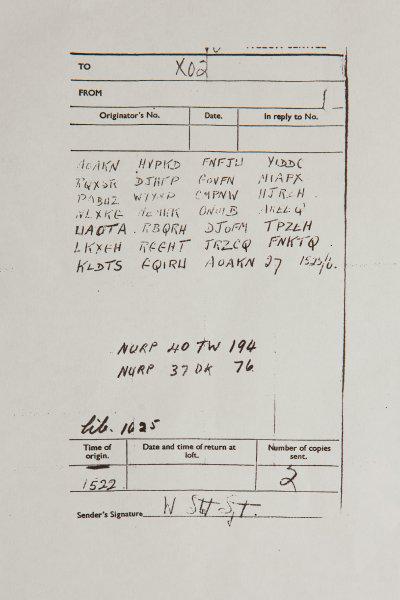
4. It is hypothesized that this message could be sent by special operations agent at Bletchley Park, where during the war the headquarters of the School of Government of codes and ciphers, later renamed the Centre for government communications. However, this hypothesis seems improbable.
Undercover agents in occupied Europe would hardly be used to send reports, official forms: if they found him, he probably would not be big trouble.
In addition, Bletchley Park was soon the center of deciphering German and Japanese mails, rather than a place for regular communication of the British Army.
"So far, the most useful of all, that we managed to squeeze out of this was the assumption made by one of ordinary citizens. It was the fact that once the note was found in the chimney, the first words it should be: Dear Santa ... "- says Tony.
The best guess is considered that the report would be sent to a detachment in the midst of some operations in Europe, the band was in motion and was not able to stop and turn the antenna to transmit radio messages.
It is also possible that it could be done during the exercise or rehearsal.
GCHQ asked the citizens to report any information that would assist in understanding the context of the sent message and could lead to its sender or recipient.
Photo: British soldiers with the pigeon. (10/26/1940) During the Second World War, the British are regularly used carrier pigeons to send messages home. For this purpose, it has trained Royal Air Force 250 thousand. Birds.

5. Based on the acronym "GTL" available in the dispatch, has been suggested that it was probably an army unit, where such an unusual way cut the word "sergeant." But who are the "GTL In Ståt" and "X02", has not yet been understood.
Another focus of the search was an attempt to set the unit to which the bird transfer encryption.
During the war, various services used about 250 thousand pigeons, and each of them was assigned an identification number. The note referred to two found these numbers: NURP.40.TW.194 and NURP.37.OK.76. Which of them belonged to the bird, which found his death in the chimney, it is not clear.
All hopes are now pinned solely on the assistance of the public.
"Many of those who worked during the war in the communication centers, are still alive. They may know something about it. It would be very interesting if they could put what they know into a common pot, and we should see how far it would help us to move ", - said Tony.
In the absence of any fresh information that dove probably carried his secret to the grave.
Source:
5 posts:
Text-source.
Photo via spiegel.de.
1. Message from the Second World War, was found dead at the foot of a dove, stumped leading cryptographers of the Government Communications (DSP) - British intelligence units responsible for information security.
The remains of the bird together with the capsule, store the message was found in the fireplace in the county of Surrey in southern England.
Interpreter of the DSP are struggling with the cryptic message without any success for several weeks.
According to them, unless additional data to decode it will likely be impossible.
In search of the information they asked for help from the public.

2. Mysterious report found David Martin, when he began to dismantle the chimney at his home in Surrey. Among all rubbish he came across the scattered remains of a dead pigeon, including foot, to which was attached a red capsule. Inside it was a thin piece of paper with a printed heading "pigeon", under which is placed a handwritten ciphertext.

3. The message is divided into 27 groups of five letters each, arranged in four columns. Encrypting of DSP - agencies specializing in electronic intelligence and data protection - have received the note at the beginning of the month, but all their attempts were unsuccessful decode it.
"In fact, we have not entertained any special hopes on the success of the decryption, because such operations use the codes developed in order that they can be understood only the sender and receiver of the message," - explains historian DSP wish to submit only as Tony .
"If you can not get much information about who actually sent this dispatch and to whom it was intended, we can not establish how exactly the code they used," - he said the BBC BBC.
Experts believe that there are two ways by which you can decrypt a note. It could be the so-called one-time code that corresponds to each message a separate key, generated randomly. If the key is truly random and known only to the sender and recipient, the code can be absolutely unbreakable.
The alternative - if the code was based on a special (and probably later destroyed) collection code compiled for a particular operation, so that the maximum amount of information about this operation can be transmitted very short message. This method, however, does not exclude the use of one-time cipher.

4. It is hypothesized that this message could be sent by special operations agent at Bletchley Park, where during the war the headquarters of the School of Government of codes and ciphers, later renamed the Centre for government communications. However, this hypothesis seems improbable.
Undercover agents in occupied Europe would hardly be used to send reports, official forms: if they found him, he probably would not be big trouble.
In addition, Bletchley Park was soon the center of deciphering German and Japanese mails, rather than a place for regular communication of the British Army.
"So far, the most useful of all, that we managed to squeeze out of this was the assumption made by one of ordinary citizens. It was the fact that once the note was found in the chimney, the first words it should be: Dear Santa ... "- says Tony.
The best guess is considered that the report would be sent to a detachment in the midst of some operations in Europe, the band was in motion and was not able to stop and turn the antenna to transmit radio messages.
It is also possible that it could be done during the exercise or rehearsal.
GCHQ asked the citizens to report any information that would assist in understanding the context of the sent message and could lead to its sender or recipient.
Photo: British soldiers with the pigeon. (10/26/1940) During the Second World War, the British are regularly used carrier pigeons to send messages home. For this purpose, it has trained Royal Air Force 250 thousand. Birds.

5. Based on the acronym "GTL" available in the dispatch, has been suggested that it was probably an army unit, where such an unusual way cut the word "sergeant." But who are the "GTL In Ståt" and "X02", has not yet been understood.
Another focus of the search was an attempt to set the unit to which the bird transfer encryption.
During the war, various services used about 250 thousand pigeons, and each of them was assigned an identification number. The note referred to two found these numbers: NURP.40.TW.194 and NURP.37.OK.76. Which of them belonged to the bird, which found his death in the chimney, it is not clear.
All hopes are now pinned solely on the assistance of the public.
"Many of those who worked during the war in the communication centers, are still alive. They may know something about it. It would be very interesting if they could put what they know into a common pot, and we should see how far it would help us to move ", - said Tony.
In the absence of any fresh information that dove probably carried his secret to the grave.
Source:


